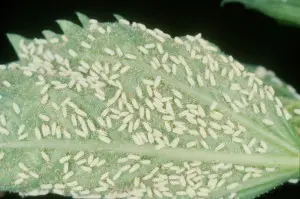
Whiteflies are often kept in check by spiders, but infestations can happen when predators are nowhere to be found due to chemical-intensive farming.
The Monsanto Company has long denied its GMO crops and chemicals have had much of an effect on the Indian farmer suicide epidemic, but a new development is once again casting doubt on their assertion.
While some claim that Indian suicides have been caused by an economic crunch in general, others point the finger squarely in Monsanto’s direction.
In fact, recent rates have climbed as high as “one suicide every 30 minutes.” According to the Center for Human Rights and Global Justice, in 2009 alone 17,638 farmers committed suicide in India, amounting to one suicide every 30 minutes. Monsanto has been blamed for contributing to this unsound economic environment as farmers have been forced to sign contracts locking them into a system of paying for chemicals to spray on their cotton crops, many of which have continued to fail in the face of pests like bollworms, which have become resistant to the GMO crops’ defense systems.
In total, 290,000 suicides by farmers over the last 20 years have occurred according to the national crime records bureau of India. Unfortunately, that trend continued in recent days as 15 more farmer suicides were recorded, after a stunning turn of events that caused widespread damage to the area’s cotton crops.
Plague of Whiteflies Destroys Cotton Crops
According to this article from The Times of India, a massive swarm of whiteflies recently destroyed large amounts of cotton crops in Punjab, a state in northwest India.

Indian cotton farmers have long struggled for myriad reasons, but pesticide resistance by insects is becoming a common trend.
In total about 2/3 of the state’s entire cotton crop was destroyed, and 15 farmers committed suicide in the wake of the infestation.
Naresh Kuma Lehri, a seed and pesticide dealer, described the scene to the Times.
“It was just like the Japanese air strike in the film, Pearl Harbor,” he said. “They appeared out of nowhere and left a trail of destruction.”
According to the article, the chemical-free, non-GMO cotton was not harmed as much as the genetically modified varieties by the pests.
In the wake of the incident, the director of the state’s agriculture department is reportedly under arrest as are several pesticide dealers. Many are accused of selling fake pesticides, but because these fake pesticides make up only about 15% of the total, locals are also suspecting them as having lost their effectiveness and are worried that the whiteflies are now resistant to them. This is a common occurrence when it comes to Monsanto’s chemicals, GMO dependent crop system, and similar pesticides.
In Punjab, the government has been at odds with Monsanto in the past over what has essentially been deemed an effort to create dependence on the company’s GMO seeds and chemicals through seed patents and other restrictions.
Indian Farmers are now standing on roads in protest of government compensation that they say amounts to “peanuts;” many have lost money due to pesticides that have not worked as promised.
“Since July, we have sprayed pesticide 10-12 times. Each spray costs about rupees 3,300 per acre. But the whitefly was unaffected,” said Manjeet Singh to the Times in front of his badly damaged cotton crop. Near him, the article’s authors said, stood non-GMO and pesticide-free cotton growers whose fields hadn’t suffered nearly as much damage.
One field had spider webs distributed among the crops; these spiders are natural predators of the invasive whiteflies.
The situation may remind some of what happened in Texas in 2014 when superweeds became resistant to glyphosate. The EPA denied a request to use stronger, banned chemicals on over three million acres of mostly GMO cotton in order to save them from the weeds.
Monsanto’s typical response to such superweed and superbug infestations has been to seek approval for newer, more toxic chemicals — and the cycle continues, with crops left vulnerable and farmers ultimately footing the bill.
http://tribune.com.pk/story/345886/agricultural-punjab-rebuffs-monsanto-attempt-to-sell-bt-cotton-seeds-to-farmers/
Thanks for installing the Bottom of every post plugin by Corey Salzano. Contact me if you need custom WordPress plugins or website design.




